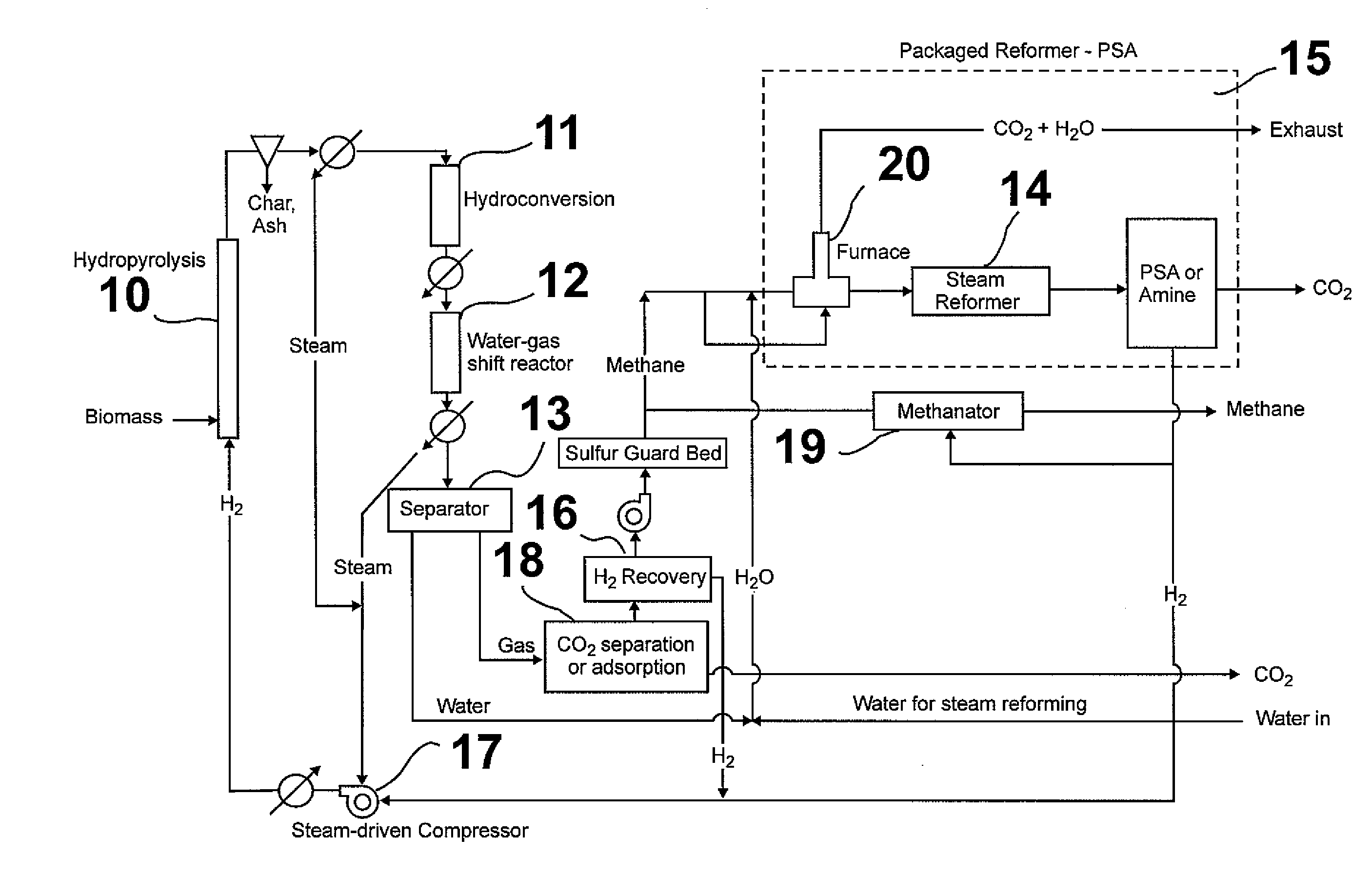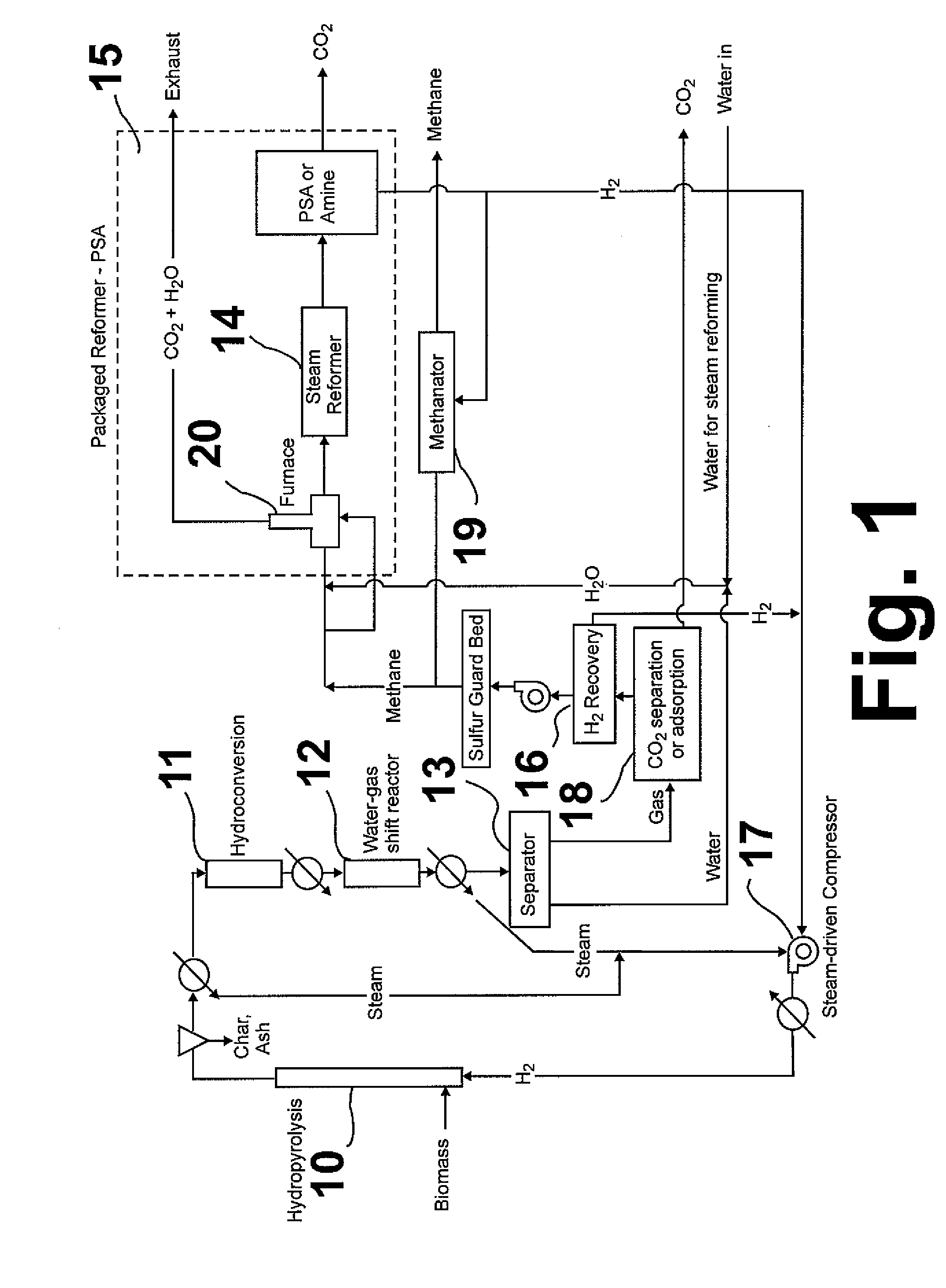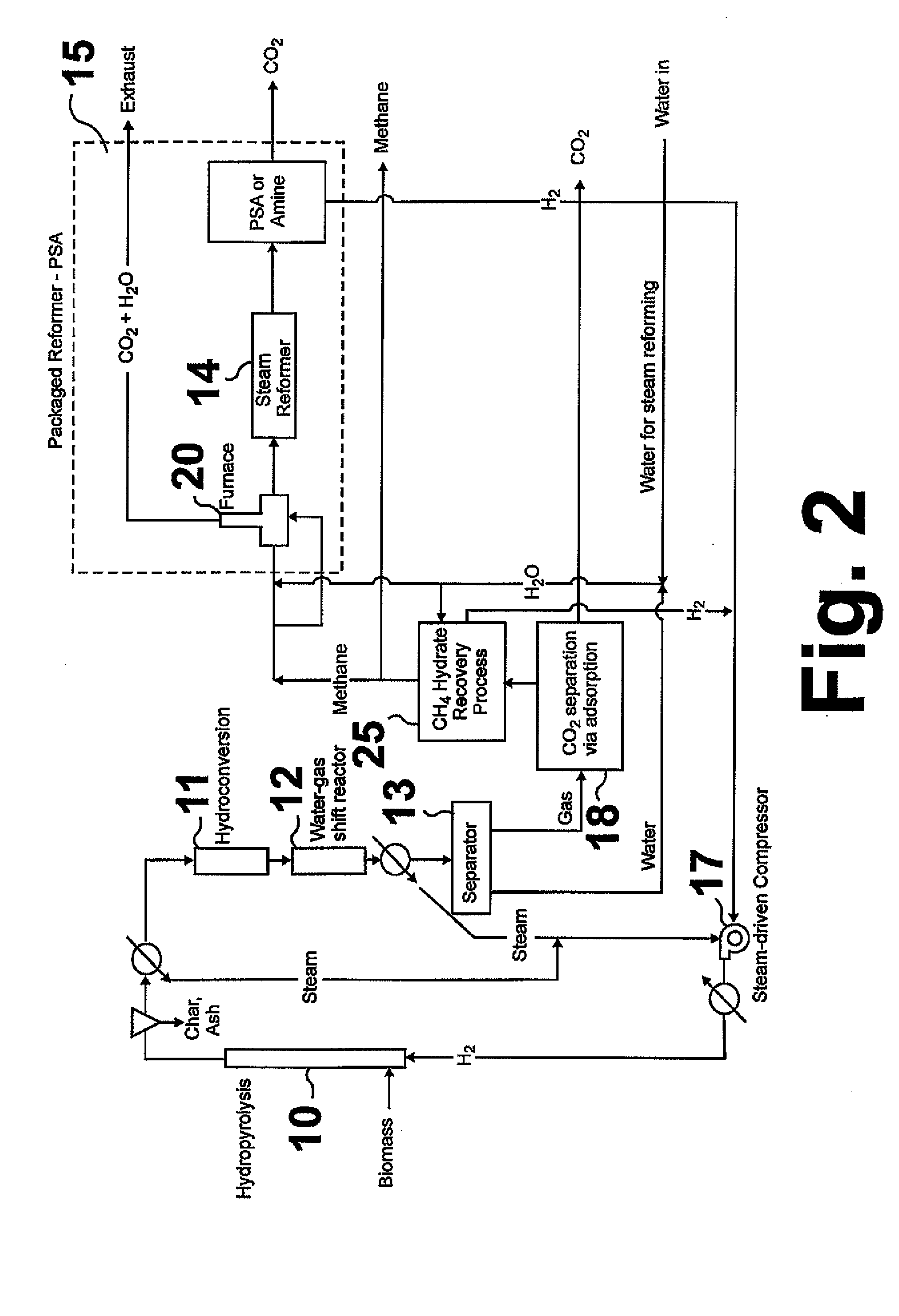Method for producing methane from biomass
a biomass and hydropyrolysis technology, which is applied in the direction of combustible gas production, combustible gas purification/modification, bulk chemical production, etc., can solve the problems of high capital expenditure of air separation plants, long time-consuming and labor-intensive conversion of biomass in anaerobic digesters, etc., and achieve fast pyrolysis and superior methane yields
- Summary
- Abstract
- Description
- Claims
- Application Information
AI Technical Summary
Benefits of technology
Problems solved by technology
Method used
Image
Examples
Embodiment Construction
[0014]The process of this invention, shown in FIG. 1, is a compact, integrated, multi-stage process for thermochemically transforming biomass into methane. The first reaction stage or step of this process employs a pressurized, catalytically-enhanced, hydropyrolysis reactor vessel 10 to create a low-char, partially deoxygenated, hydropyrolysis product from which the char is removed. Although any reactor vessel suitable for hydropyrolysis may be employed, the preferred reactor vessel is a fluidized bed reactor. The hydropyrolysis step employs a rapid heat up in which the average internal temperature of the particle rises at a rate of about 10,000° C. / second. The residence time of the pyrolysis vapors in the reactor vessel is less than about 1 minute. In contrast thereto, the residence time of the char is relatively long because it is not removed through the bottom of the reactor vessel and, thus, must be reduced in particle size until the aerodynamic diameter of these particles is su...
PUM
| Property | Measurement | Unit |
|---|---|---|
| hydropyrolysis pressure | aaaaa | aaaaa |
| hydropyrolysis temperature | aaaaa | aaaaa |
| hydroconversion pressure | aaaaa | aaaaa |
Abstract
Description
Claims
Application Information
 Login to View More
Login to View More - R&D
- Intellectual Property
- Life Sciences
- Materials
- Tech Scout
- Unparalleled Data Quality
- Higher Quality Content
- 60% Fewer Hallucinations
Browse by: Latest US Patents, China's latest patents, Technical Efficacy Thesaurus, Application Domain, Technology Topic, Popular Technical Reports.
© 2025 PatSnap. All rights reserved.Legal|Privacy policy|Modern Slavery Act Transparency Statement|Sitemap|About US| Contact US: help@patsnap.com



